Food for Thought: Create New England Regional Food System That Addresses Climate Crisis, Feeds Everyone
July 27, 2023
A robust regional food system that would provide much of New England’s sustenance is a must if the six states really want to help mitigate the climate crisis and be food secure as the world simultaneously burns and floods.
The pandemic and rapidly escalating climate change have shown us the vulnerability of the global food system. The time is now to create a regional one. The global food system is beginning to collapse.
“Our food system is global. There are growing risks of simultaneous major crop losses in different regions in the world, which will really affect food availability and prices. This is not what we’re seeing right now, but in the coming decades that’s one of the things I’m really scared of,” John Marsham, a professor of atmospheric science at the University of Leeds, recently told The Guardian.
To meet the requirements of an aspirational but prudent document published nearly a decade ago — for New England to produce 50% of the region’s food needs by 2060 — farmland under cultivation in the six-state region would need to increase from about 5% to 15%. Rhode Island struggles to stay around 6%.
The guiding-light report does note that “it is worth knowing that if pressed, New England could produce two-thirds of its own food.” But let’s not get ahead of ourselves.
Published in 2014, A New England Food Vision’s ambitious goal requires the region turning back the clock nearly eight decades. To get to 50 by 60, would demand tripling the amount of farmland in production, from 2 million acres to 6 million, to feed more than 15 million New Englanders based on the U.S. Department of Agriculture’s MyPlate recommended diet.
Currently, New England produces about 10% of the food it consumes. In Rhode Island, that percentage gets cut in half. Much of what is produced and consumed here is milk and potatoes, according to Ken Ayars, chief of the Division of Agriculture at the Rhode Island Department of Environmental Management.
In 1945, New England had about 6 million acres growing and producing food. Since then, Rhode Island has lost some 80% of its farmland to development. More recently, in Massachusetts from 1999 to 2005, land was developed at a rate of 22 acres a day, converting some 40,000 acres of farmland and forest to residential use, according to a 2009 Mass Audubon report.
A mid-20th-century level of farmland acreage would support the production of all of New England’s vegetables, half its fruits, all of its grass-fed dairy, beef, and lamb, and all pastured pork, poultry, and eggs, according to the Food Solutions New England report.
The other 50% would be imported, including most of the grain we consume — for both humans and animals — plus fruits, oils, nuts, coffee, tea, chocolate, and sugar.
The problem is that most of those missing farmland acres are now covered by asphalt and concrete. For example, just over a decade ago, in 2012, the University of Rhode Island paved over about 15 acres of prime agricultural soil in the Flagg Road/Plains Road area to build a parking lot and a new road. This asphalt assault came two years after the university unveiled its “Think Big. We Do.” marketing campaign.
“We’re rapidly losing farmland, let alone expanding farmland to grow more food,” said Julianne Stelmaszyk, director of food strategy for Rhode Island Commerce. “We have to decide how we balance our investment in our working lands and working waters and our food system with our other priorities around economic development and housing and renewable energy, which are all equally important.”
Another problem that would need to solved if we are to scale-up local food production is the fact there are way fewer people today who know how to farm and raise livestock. Those that do, are closing in on retirement or sold their land for an easier lifestyle. Many of those looking to break into farming can’t afford the land. Rhode Island, for instance, has the highest-priced farmland in the country, at $17,500 an acre, according to the USDA. The national average is $3,800.
This lack of access to affordable farmland threatens the state’s agricultural sector, according to Ayers. Stelmaszyk noted Rhode Island’s high cost of farmland makes it difficult for local farmers to “compete with zucchini coming out of California.”
As of Jan. 1, Rhode Island had 1,100 farms and 60,000 acres in agricultural production, according to the most recent USDA Census of Agriculture. The census is taken every five years. In 2017, the state had 1,043 farms and 56,864 acres in production.
While those numbers represent a modest increase, during the past dozen years the state and its partners, most notably Farm Fresh Rhode Island, Southside Community Land Trust, Eating with the Ecosystem, the African Alliance of Rhode Island, and Hope & Main, have steadily nurtured a more locally based food system. In that time, the Ocean State has seen a marked increase in new and beginning farmers, young farmers, and immigrant food producers.
During the past six years, the state has invested some $25 million in food, farming, and fishing/aquaculture businesses through grants, small-business loans, and tax credits.
Most recently, the Rhode Island Food Policy Council, Farm Fresh, Southside Community Land Trust, Eating with the Ecosystem, and the Commercial Fisheries Center of Rhode Island partnered to build sustainable market channels between local farmers, fishers, and food manufacturers and Rhode Island’s emergency food providers to make sure all residents have access to fresh, local, culturally relevant food.
The goal of the Rhody Feeding Rhody Alliance is to create a larger, more reliable wholesale market for local producers and harvesters while also increasing access to healthy fare for food-insecure families.
Plenty of work and policy changes remain if Rhode Island and the region’s five other states want to produce and consume significantly more local food. Urban farmers, community gardens, farmers markets, and community-supported agriculture alone can’t carry a regional food system. Serious investments in agriculture and seafood infrastructure are essential to ensuring long-term food security throughout the six-state region.
DEM’s Ayers said a regional food system that encompasses New England would provide food security, create a more resilient economy, and help mitigate climate change impacts. He called its creation “essential.” Plenty of others, including those ecoRI News recently spoke with, share his opinion.
The federal government and state agencies throughout the region are beginning to better understand and appreciate the need for local/regional food systems.
“The USDA is starting to recognize that there’s value in investing in these more regional and distributive food systems in the same way that we think about energy and transportation,” Stelmaszyk said. “We know that it’s dangerous when it’s all controlled or centralized in one place.”
ecoRI News recently spoke with Nessa Richman, network director for the Food Policy Council, and Jesse Rye, executive director of Farm Fresh. Both have been working tirelessly to build local and regional food systems. They, along with foodies, small-scale farmers, and climate activists, have been championing the local food movement for years.
“There have been those of us who’ve been trying to build local and regional food systems for, you know, decades now,” Richman said. “But a whole new host of other entities, including folks who think about national security, are now understanding that we need to have a regional food system in order to ensure food security for all people, not just people who experience food insecurity, unfortunately, on a regular basis, but for all people in the case of inevitable emergencies and food supply chain breakdowns.”
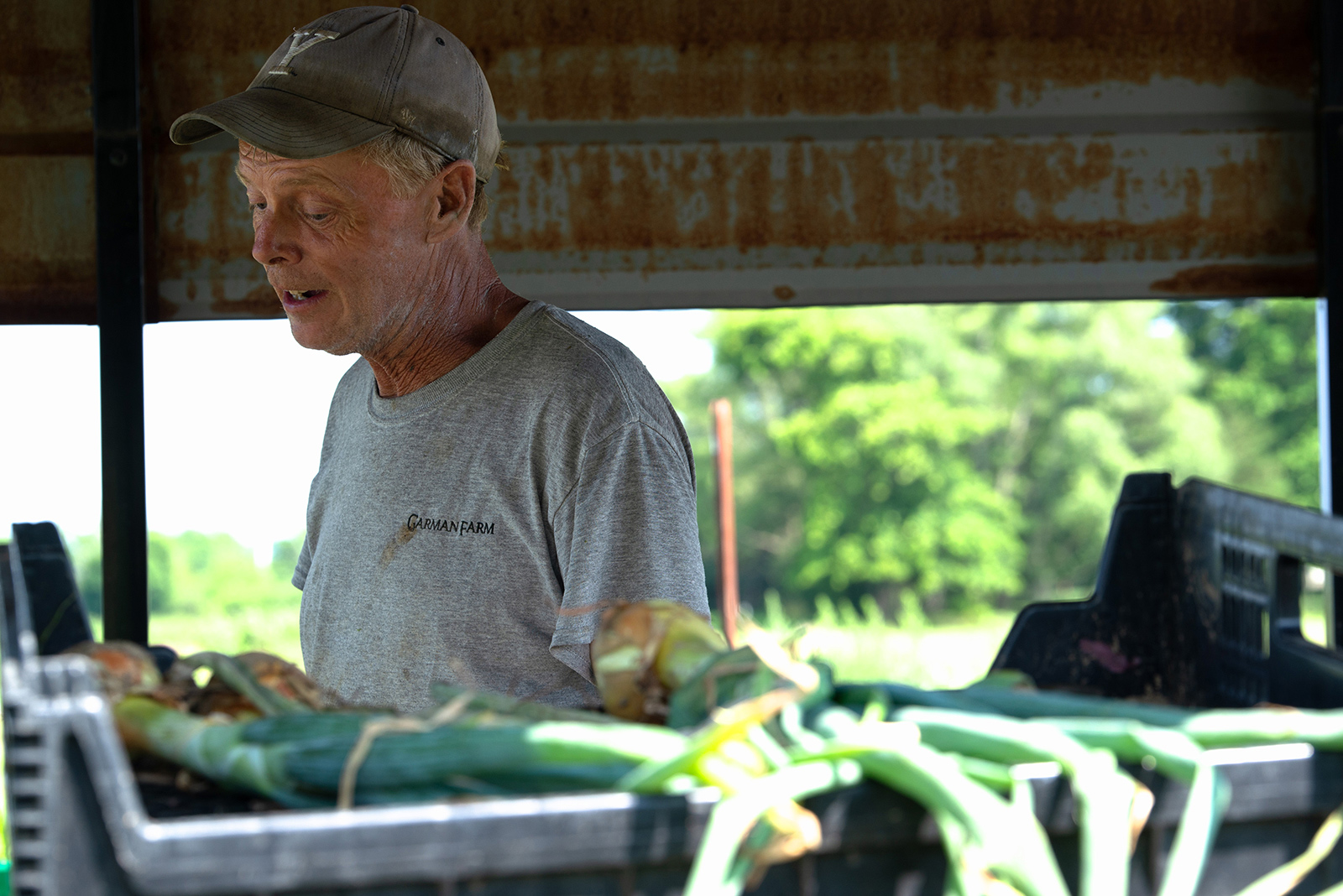
50/60 vision
Among the things New England can’t grow — besides popular items such as bananas, oranges, coffee, and cocoa — is land. To produce more local food would require us to stop covering what farmland is left with solar panels (there is plenty of vacant and underused already-damaged space available), provide financial support to farmers, approve more bond money for farmland protection, make farmland affordable, and create more space to grow.
To reach the 50-by-60 goal, forest cover, unfortunately, would need to decrease by some 10% to replace all the farmland we have destroyed. Rhode Island has spent the past decade hacking down woodlands to create places to play blackjack, do banking, and generate energy. Since 2018, Rhode Island has lost nearly 1,100 acres of open space, much of it forested, to ground-mounted solar arrays, because the state has failed to adequately support and incentivize the installation of solar panels on rooftops, carports, median strips, and already-developed areas.
Our land-use management desperately needs a new vision — one that actually considers the environment, helps mitigate the climate crisis, and feeds people. Between 10% and 15% of New England households regularly do not have enough to eat. In Rhode Island, some 50,000 households, about a third, are food insecure.
“Here in Rhode Island, we have a limited amount of land so we really need to make the most of that,” Richman said. “But we also need to make sure … that the food that we purchase is coming from the region. Institutions [schools, colleges, hospitals] have been doing a better and better job of this, but we need to see, I think, more buy-in from restaurants and from grocery stores in particular.”
Currently, about 90% of New England’s nutriment comes from outside the region, brought here by a global system that will continue to be stressed by prolonged drought, intense flooding, and other severe weather, a shrinking human-wildlife interface that will unleash more viruses, and a growing Homo sapien population.
Besides being more vulnerable to drastic, or even subtle, worldwide change, the global food system also diminishes the planet’s soils and waters, exacerbates the climate crisis, weakens public health, is wasteful, and routinely pays those doing the farming and fishing poverty wages.
Food production is also both a key source of planet-warming emissions and highly exposed to the impacts of a changing climate.
As early as 2030, the climate crisis could impact the production of corn and wheat, according to a 2021 study by the National Aeronautics and Space Administration.
Corn yields are projected to decline 24%, while wheat could potentially see growth of about 17%, under a high greenhouse gas emissions scenario played out by NASA. Using advanced climate and agricultural models, scientists found that the change in yields is due to projected increases in temperature, shifts in rainfall patterns, and elevated surface carbon dioxide concentrations from human-caused greenhouse gas emissions.
The projected corn response was surprisingly large and negative, according to the study’s lead author. He noted a 20% decrease from current production levels “could have severe implications worldwide.”
In fact, harvest failures in multiple global breadbaskets have been underestimated, according to a study published July 4. The researchers noted the study should be a wake-up call about the threat the climate crisis poses to food systems.
A panel of scientists warned earlier this year that the record-breaking heat the planet endured last summer will be repeated without a robust international effort to address climate change. (This summer got off to a hotter-than-hell start in much of the United States. July 18 marked the 19th straight day the city of Phoenix was subjected to temperatures of at least 110 degrees Fahrenheit, as record-breaking summer weather continues to affect millions in the United States and around the world. Phoenix, incidentally, will become the first major city in American history to average more 100 degrees for an entire month.)
Heat-related deaths, wildfires, extreme rainfall, and persistent drought are expected to become increasingly severe as both ocean and atmospheric temperatures continue to rise, the panel said. Even if all greenhouse gas emissions ceased today, the planet would continue to warm for several decades.
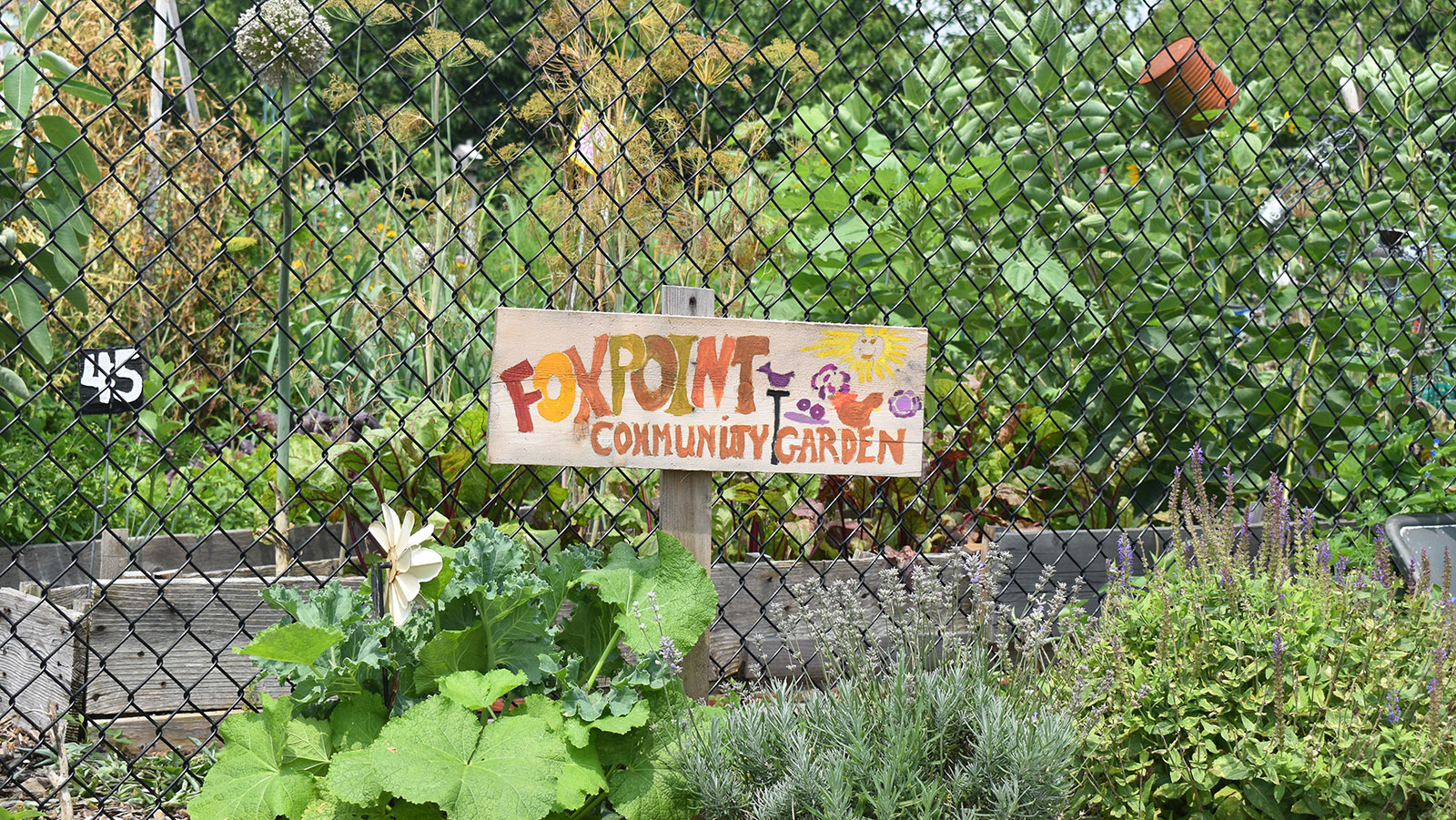
Nimble moves
To create the much-talked-about regional food system would first and foremost require strong political will. The six New England statehouses would need to be actively engaged in its creation, because such a network would need sturdy support and substantial funding. It couldn’t be held for further study.
There would need to be a substantial commitment to addressing the needs of small and mid-sized growers and producers. Farms of this size operate without the safety net of Big Ag subsidies. They survive on razor-thin margins.
Financial barriers for people who come from food and farming backgrounds but don’t have access to the necessary capital to break ground would need to be removed. It would require private and public money to better connect producers with consumers.
It would require educating students about the importance of food and nutrition. Creating many more school gardening and composting programs would be a good place to start. It would mean supporting and funding food-assistance programs for low-income families, as about 11% of the New England population lives in poverty.
It would also require simplifying food-safety regulations and cutting back on the red tape, but without neutering environmental and public health protections. It would mean making land-use policy support a local food system rather than egotistical development. It would require continuing and improving the coordination between the many agencies, organizations, and institutes of higher learning with fingers in the New England food pie.
The effort would also require clearing a significant obstacle: cheap food, most of which is highly processed and unhealthy.
“Some of the barriers are, quite frankly, 75 years of a paradigm shift in the way that federal money is invested. We’re fighting against cheap food,” Stelmaszyk said. “The farm bill is actually under reauthorization right now. It’s a big opportunity to really shift investment. And I will say the USDA has done a really great job in the last few years about trying to diversify and distribute and give more money to smaller urban producers, rural producers, smaller new beginning farmers. But it’s a drop in the bucket against the subsidies that are given to the large monoculture farms that are growing corn and soy. The reason that local food is more expensive is not because it necessarily costs more to produce, but it’s because the other food is heavily subsidized.”
Creating a regional food system also isn’t sexy. In fact, according to Rye, it can be boring. But such a network is vital to navigate this increasingly stressful time and uncertain future.
“You know, for the work that we do at Farm Fresh, we’ve established relationships with farmers and food distributors in just about every New England state,” Rye said. “And what does that look like in practice? In practice, it’s really boring; it’s getting frozen broccoli from Maine down to Rhode Island so we can get that into schools. But that’s part of a regional food system. It’s about getting processed potatoes and corn and veggies from western Massachusetts, because they have the freezing infrastructure there. It’s about identifying how we can connect regional supply with local demand.”
He also noted it’s about creating and maintaining those relationships.
“We need to really make sure that those relationships are strong. I think that’s a really big component of this as well,” Rye said. “And I think another part of this is just making sure that when we’re having these conversations about what’s important or what should we be working towards, do we have all the voices at the table that need to be there, have our efforts been as inclusive as they can be in our communities that are affected by hunger disproportionately?”
The region’s large urban population, especially in southern New England, and cold (although warming) climate make complete local food self-reliance an unrealistic goal, according to the often-cited 2014 Food Solutions New England report. It notes there isn’t enough prime cropland in New England to provide the needed grain and vegetable oil.
The coronavirus pandemic, though, clearly demonstrated the importance of local food systems that, unlike global or even national food-supply chains, are nimbler than their large-scale counterparts. They can adapt more quickly.
“I think we all saw why it’s important for us to have a regional food system when we were dealing with the food supply chain breakdowns during the pandemic,” said Richman of the Food Policy Council. “And I think that everybody can kind of see that that experience is a foreshadowing of potential food supply chain breakdowns in the future due to any number of climate-related impacts in the parts of the world where we get most of our food from [California, Mexico, China].”
The world’s changing landscape means if New England can establish a hardy regional network supported by dynamic local systems, it can better secure a safe and healthy food supply.
The 9-year-old vision of a New England food system is premised on the right to healthy, accessible food for all. This right, however, can’t be realized without policy and systematic changes that create programs and networks that support more than just local food production. It is also about social and climate justice, livable wages, affordable housing, wildlands preservation, and environmental protections.
Building a regional food system can’t be done in a silo, according to Shane Rogers, communication director for New Hampshire-based Food Solutions New England.
“A resilient food system is not just amping up production in any which way, not just replicating systems that have kind of caused us to get into some of the messes that we’re seeing now with climate change, and food insecurity, and general inequity with land access,” the Vermont resident told ecoRI News a few days after flooding devastated his state. “The systems that were created weren’t created to feed us; they were created to drive profits for those who own the supply chains. We need to create a system that is again centered on the community first and foremost, because the community is what needs to be fed. We don’t need a system that is designed to line the pockets of those who control the means of production.”
Rogers noted that even though strawberries were recently in abundance in Vermont grocery stores were largely selling strawberries from California.
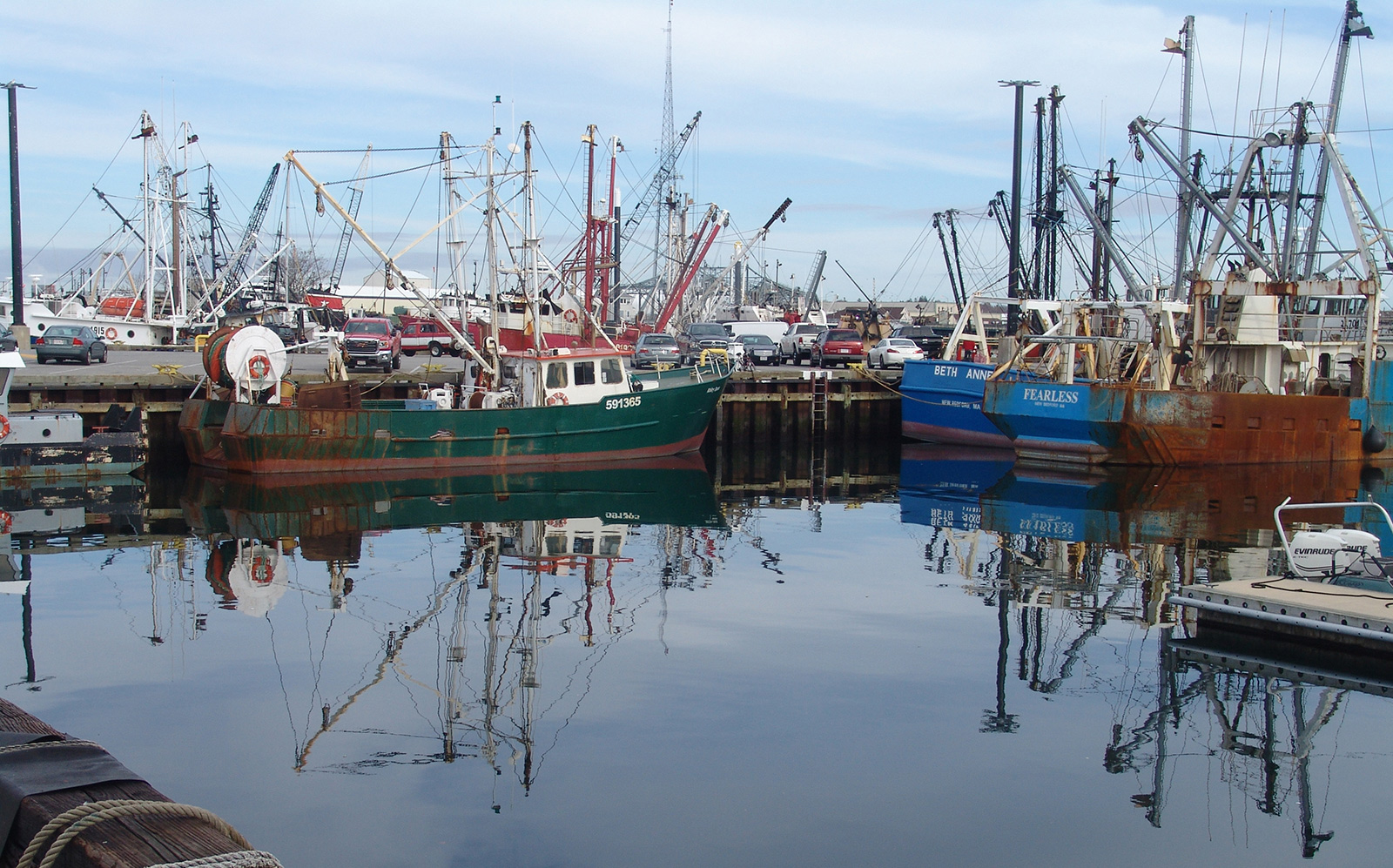
Fishing for answers
To make a 50% regional food system work — beyond more farmland and farmers — a resuscitated and reimagined New England fishery would be needed. The region’s warming marine waters require the industry adopt different infrastructure to catch the warm-water species taking over Narragansett Bay, Cape Cod Bay, and the Gulf of Maine. The peak days of cod and lobster are gone. This infrastructure makeover also needs to include adopting environment-friendly fishing practices that don’t threaten whales and destroy habitat.
It would also require what is harvested from New England’s marine waters to be retained at a higher percentage within the region rather than being exported. For example, the Ocean State imports 95% of the seafood consumed here and exports 97% of the seafood caught here.
Although the state’s Port of Galilee in Narragansett is one of the largest on the East Coast and among the top 10 nationwide, much of the seafood landed there is exported outside New England. That results in important economic returns but also impacts the local/regional food system in a negative way.
Part of the reason the local catch isn’t being eaten locally is that fish is a product that requires a lot of processing, and Rhode Island, for one, doesn’t have the large-scale processing facilities to prep local fish for the market in a reasonable time frame — mostly because the state doesn’t yet have the capacity to deal with the vast volumes of wastewater generated in processing seafood. A municipal system can quickly become overwhelmed.
There’s also the challenge of getting the public to eat abundant but undervalued local fish, such as scup, spiny dogfish, and less-than-handsome monkfish, and the challenge of paying fishermen fairly for an abundant species with little demand.
Shellfish aquaculture also would need to be an increasingly important part of the region’s revamped seafood production industry.
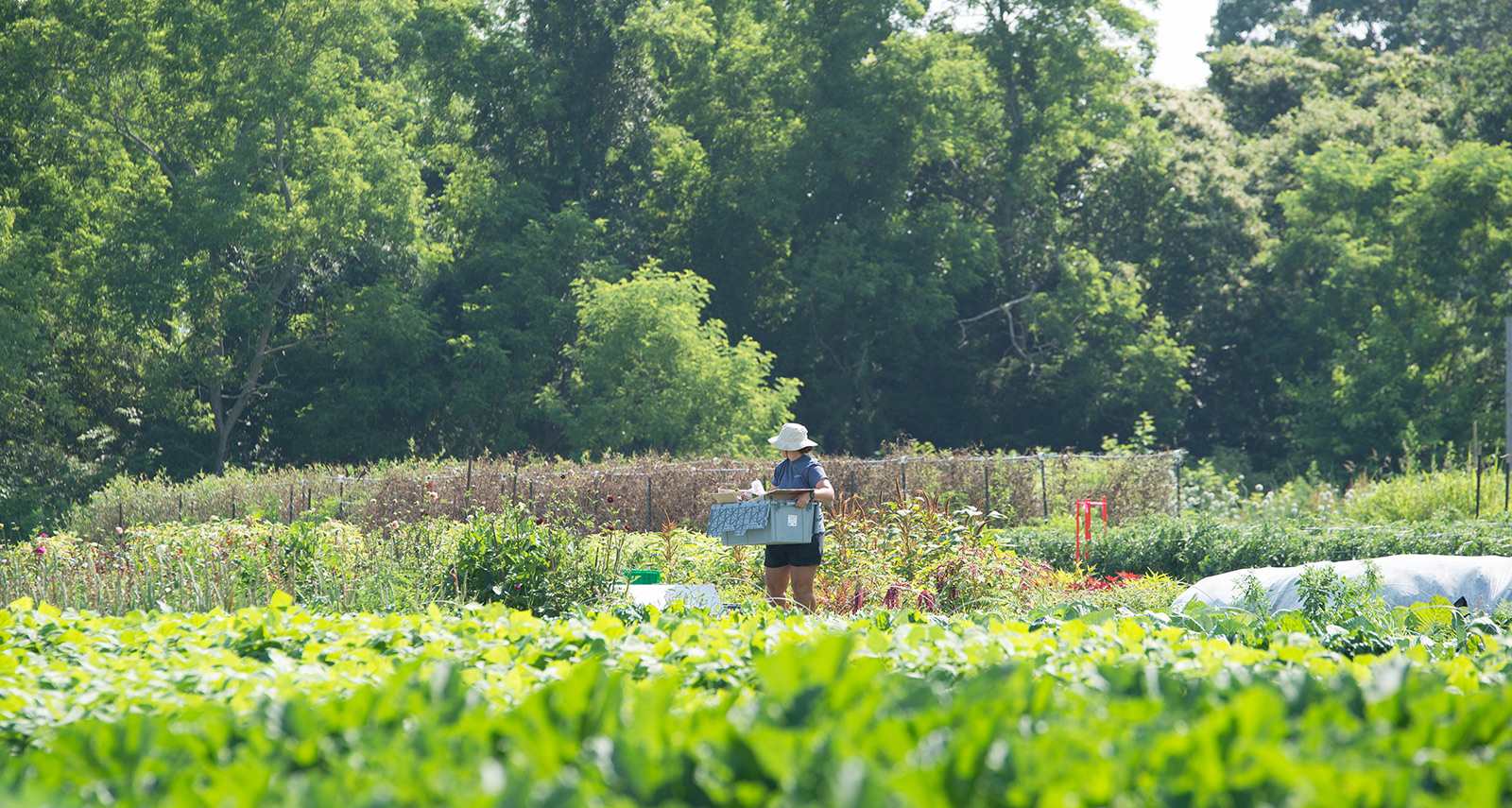
30/30 vision
Relish Rhody, unveiled in 2017, was designed to be Rhode Island’s blueprint to 50 by 60. Its strategy outlined high-priority activities designed to build a “vibrant, sustainable, equitable food system.”
The plan’s intent was to build on “our traditions, strengths, and history while encouraging innovation and supporting a regional goal of reaching 50% of the food eaten in New England being produced in the region by 2060.”
The Relish Rhody report recommended near-term actions steps that included: expanding the preservation of active farmland; reducing transportation barriers to food access; reducing the price and increasing access to healthy foods; supporting the development of community gardens; and creating a statewide hunger task force to lead efforts to reduce food insecurity.
In January, Stelmaszyk, the state’s director of food strategy, in partnership with DEM and the state Department of Health, began an effort to renew the Ocean State’s food strategy by “engaging with food system stakeholders across the supply chain to better understand” where progress has been made since the Relish Rhody food strategy was released, where the state has fallen short, and where are the “areas for greatest opportunity to build a more resilient, sustainable and equitable food system.”
“Good food is a tool for better health outcomes, a cleaner environment, job creation, and more resilient communities,” Stelmaszyk said when the initiative to update Relish Rhody was announced.
A Steering Committee is in the initial phases of creating Relish Rhody 2.0. Preparation for this updated food plan is expected to include “extensive data collection, listening sessions with Rhode Island food system leaders, and public forums.”
Vermont-based Northbound Ventures Consulting LLC is supporting the early stage development of the planning process, including conducting a five-year impact report on the 2017 Relish Rhody strategy. This revived effort plans to “launch and widely distribute Relish Rhody 2.0 Food Strategy for 2030” by spring 2024.
Relish Rhody 2.0 is being aligned with a different but related regional food system report titled New England Feeding New England: Cultivating A Reliable Food Supply. The comprehensive report delves into whether the six New England states could provide 30% of the region’s food by 2030.
In late June, New England’s six agricultural chiefs, including Ayers, signed a letter in support of the 30-by-30 report, which attempts to envision a way of eating that would allow New England to become more self-reliant on local food.
To accomplish that, the region would have to substantially cut back on sweeteners, fats, and processed foods, because not many of these items are produced in the region. We would also have to adopt a healthier diet.
When it comes to regional farms, the northern New England states have most of the farmland, and the southern states have most of the consumers.
To actually move toward that 30% figure in the next six-plus years, last month’s report says an enormous investment in keeping and expanding agricultural land in the northern states would be needed. The people, political power, and funding sources from southern New England would have to help support that effort.
Currently, if all of the food produced in New England was consumed here, it would only represent 22% of our nourishment needs, according to the 30-by-30 report.
Most importantly, though, any future vision of a regional food system needs to make sure no one is left out.
“We need to ensure that when we’re talking about a regional food system, we’re not just talking about affluent people having good food to eat,” Rye said. “We’re talking about good food being available for everyone. We’re talking about access to all folks regardless of socioeconomic status.”
Said Stelmaszyk, “We cannot keep growing our food system if we do not address these inequities.”



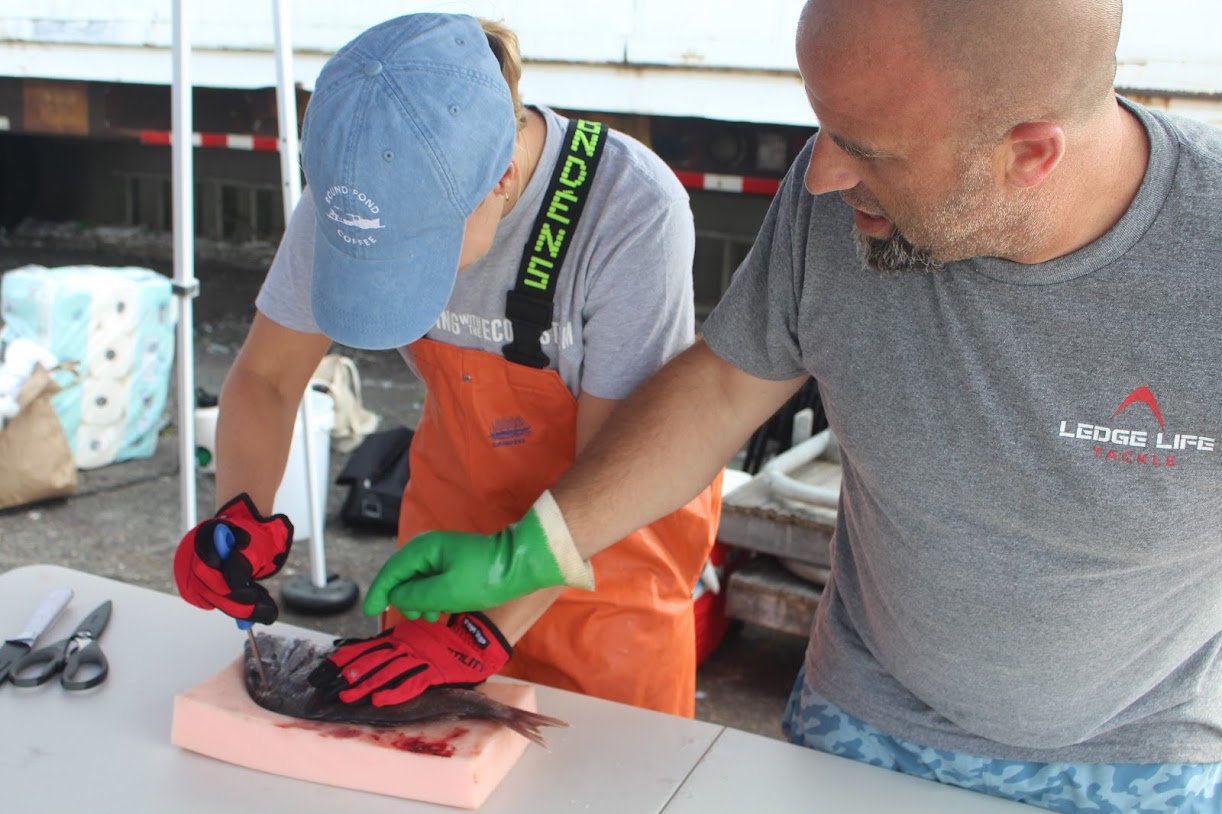
“an enormous investment in keeping and expanding agricultural land in the northern states”…So how many acres of northern forest will be cleared to feed us? These are not going to be small family farms like we have in RI.